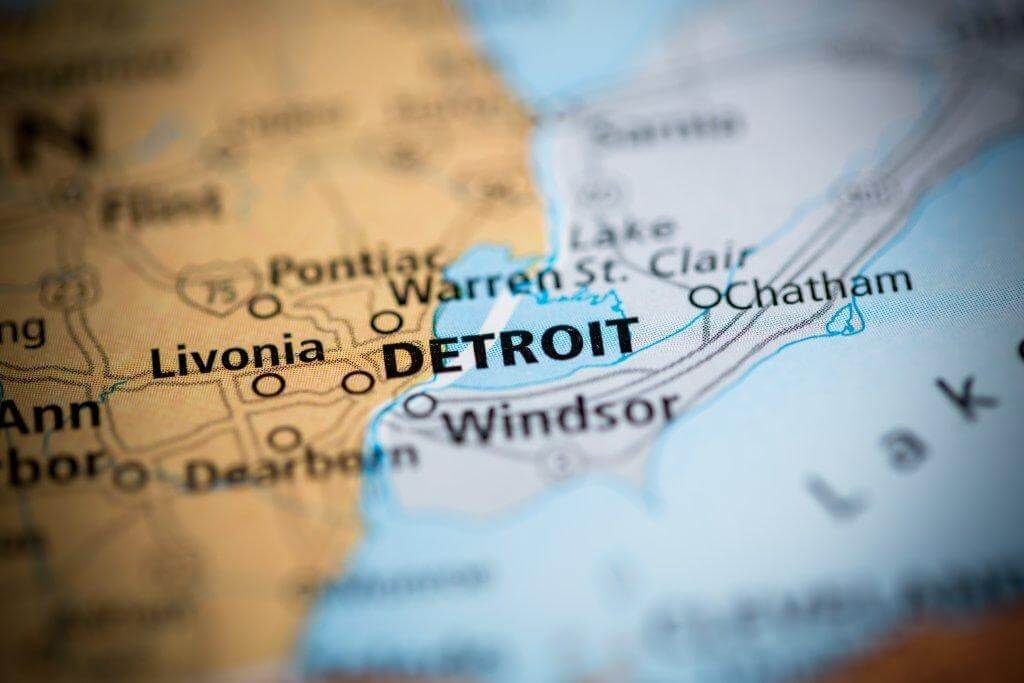DETROIT — The entrepreneur Jerry Paffendorf bought a vacant lot in Detroit for $500 back in 2010. And then he did something truly unusual — maybe even unique — with it.
He created a map that parceled the land on East Vernor Highway Street into a grid of 10,000 one-inch squares, and he invited people to be inch-vestors in the property for $1 a square. About 600 people from all over the world bought them all.
“We had a solar panel-powered webcam so owners could monitor their property,” Mr. Paffendorf recalled recently. In the spirit of online games like FarmVille and SimCity, the project was designed as a provocation. You own an inch in Detroit. What do you want to do with it?
The project received a lot of attention, not all of it the kind Mr. Paffendorff had anticipated. Having lived in cities like New York and San Francisco that were “growing, noisy, thriving, where you had to scream to be heard, I didn’t know how different Detroit would be. It’s like a very big small town. I think a lot of people wondered, “‘Who is this crazy person?’” he said.
Mr. Paffendorff, 34, who calls himself an artist and a futurist, studied fine arts at Montclair State University in New Jersey and science in the Studies of the Future program at the University of Houston. He moved to Detroit in 2009 after working at or creating technology start-ups in Los Angeles, Washington, and Brooklyn.
He said the mapping project introduced him and his collaborators to the world of vacant properties, how they are mismanaged and misunderstood, and how the city of Detroit at that time had no capacity to have any information about itself. “To a shocking extent,” he says, “the city had no mechanism for understanding the space of itself.”
That was no small matter for a city that owned almost 100,000 properties. Mr. Paffendorf realized no one else was going to map them so, expanding on the original “silly inch-grid” idea, he started injecting real-life parcel information into maps, ultimately mapping every single parcel in Detroit, and Motor City Mapping was born.
It is a comprehensive effort to digitize Detroit’s property information and create clear communication channels among the public, the government and city service providers. And in most neighborhoods in the city, people now know they can go to the website to look up foreclosures or their own taxes or to learn about properties.So popular did the project become that in May, the organization received a $1 million grant from JPMorgan Chase to do a similar project across Cleveland, Cincinnati and Columbus, Ohio. And since its start, Motor City Mapping has been expanded into a national project called Loveland, that aims to “make the invisible ownership grid that divides up property around the country — and the world — visible.”
“The United States was the first country founded on the parcel,” Mr. Paffendorf said. “One of the things that made the country grow was dividing it into the squares. We’re currently trying to put every property in the country online.” There are an estimated 150 million parcels across America. So far, Loveland has put 100 million of them online and made them freely available.
The catalyst for Mr. Paffendorf’s expansion was Detroit’s declaration of bankruptcy in 2013. The White House created a task force to help the city address its many challenges. Blight was one problem; internet technology was another. He and the Motor City Mapping team were asked to make a presentation to the government and local organizations, which were asking what they could do to help the city combat blight.
The mapping team responded with a mix of technology and old-fashioned pavement pounding. The company hired 150 Detroiters to survey nearly half a million properties in 2013 and 2014. People were dispatched to every property in the city, where they photographed and surveyed them.
With that information, the M.C.M. team built an uploadable database that breaks the city down into different spatial areas and offers a general overview of how many properties exist and how many are unoccupied (approximately 50,000). (This information was used in the Detroit Blight Removal Task Force’s report at timetoendblight.com). The company was also hired to track and survey all structure-damaging fires in Detroit — there were 2,981 in 2015 — and to survey nearly 9,000 foreclosed homes thought to be occupied in Wayne County, which includes Detroit.
Many cities have vacant and abandoned properties, but Detroit has the dubious distinction of being at the top of the list. Last year was a record year for tax foreclosures in the city: 62,082 properties entered the formal foreclosure process at the beginning of the year. That means more than 15 percent of the entire city is at risk of transferring to public ownership.
And at least 25,500 of those properties were occupied residential structures. Detroit owns nearly 100,000 properties — what amounts to 20 square miles of vacant land in the city, an amount roughly equivalent to the size of Manhattan. About 56 percent of those foreclosures are now blighted or abandoned properties. Of those, approximately 13,000 are slated for demolition at a projected cost of $195 million.
Data like this is sensitive, and data alone certainly cannot solve the problem. As such, Mr. Paffendorf said of the effort, “We try to be conservative. We try not to oversuggest demolition. We’ve taken a long time to do this, to make relationships in the city, and progressively we’ve grown to be a de facto official resource for property information and for planning efforts around property remediation, rehabs and the like in Detroit.”
Loveland’s ambitious project cannot fully solve the problems vacant and abandoned properties have wrought in the Motor City, but it shows how technology can be used as one tool among many in solving the seemingly intractable challenges of urbanism.


